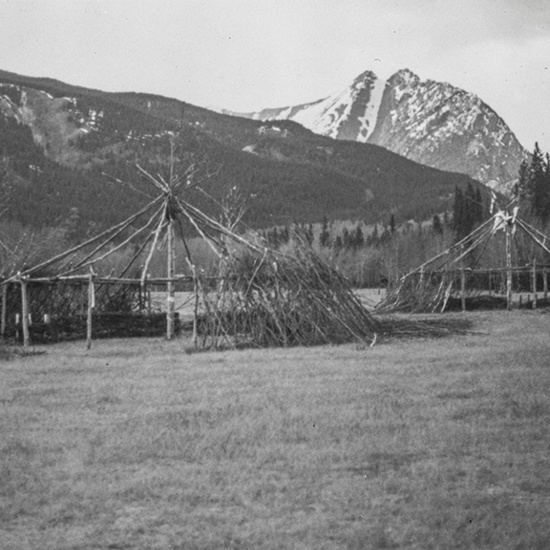Indigenous
When outsiders look upon Indigenous architecture, they are often intially preoccupied with the ease and simplistic appearance. However, under the surface of the natural materials and form are complex design elements that rival today's modern buildings.
When outsiders look upon Indigenous architecture, they are often intially preoccupied with the ease and simplistic appearance. However, under the surface of the natural materials and form are complex design elements that rival today's modern buildings.
The foundations of Indigneous Architecture remain rooted in traditional practices of First Nations, Metis and Inuit people. Focusing less on the final outcome of a structure, much attention is paid to the process of designing something through purposeful, ongoing and informative relationship building. Through these discussions, designers and proponents learn to focus on form and function as opposed to an over emphasis on design. Most often, design elements of modern buildings mimic the traditional structures viewed through black and white photos. Utilizing natural materials and shapes, Indigenous architecture helps the user or viewer reconnect with nature at a personal level, reinstituting traditional beliefs and Indigenous pedagogies.
These designs should not be viewed as an evocation of bygone design, simplistic in nature or easy by any stretch of the imagination. Rather, they are a return to fully functional designs that have remained standing across North America since time immemorial. Although revered in some circles as not real “architecture”, one must begin to push the boundaries of what is defined as architecture, and the role that colonialism has played in these designations. Colonialism and erasure have played a significant role in diminishing the role of Indigenous Architecture in Canada. Entire histories have been lost in terms of traditional structures, bridges and other architectural examples that made up vital portions of Indigenous ways of life.
Examples that exist and are readily known are plains tipis, sundance lodges, sweatlodges, longhouses, medicine wheels and bridges. Leading the way in terms of Indigenous Architecture are vanguards like Douglas Cardinal, whose designs and structures are unmistakingly unique, and sprinkled across North America. Other recent leaders includer Patrick Stewart, David Fortin and Gerald McMaster. Their cumulative works range from governmental, to education and ultimately cultural spaces. Many of their buildings exist within Indigenous communities, which may be cause for mainstream society not being aware of some of these precedent setting structures.
https://qmackie.com/2010/04/15/aboriginal-bridges-of-northwestern-b-c/
Details
Structures
Architects
Time Periods
Pre-Contact and Fur Trade: 11,000 BCE to 1870
Urban Settlement: 1870-1904
Urban Growth: 1905-1913
The War Years: 1914-1945
The Post War Years: 1946-1970
Neighbourhoods
Character Defining Elements
Adaptable exterior, Aspen cladding, Centre pole, Ceremonial space, Easily erected, Flowing lines, Natural materials, Round shape, Semi-permanent, Wood frame


